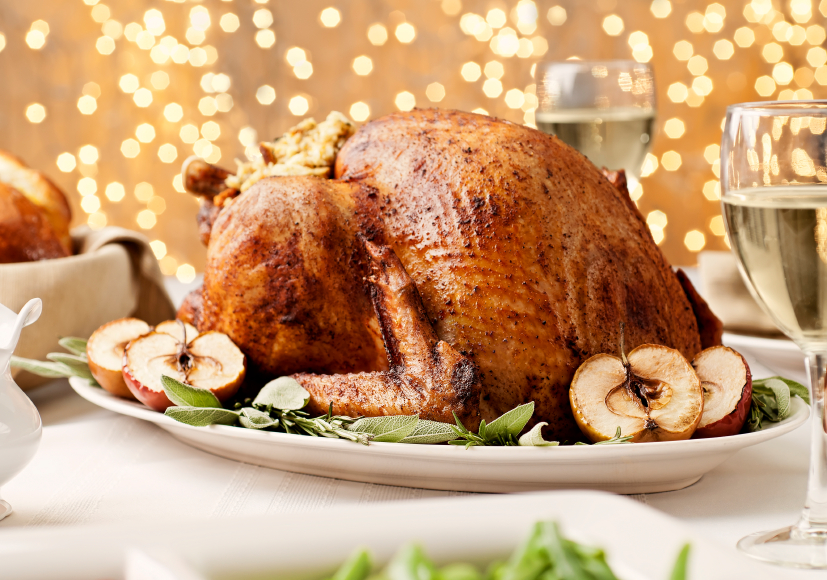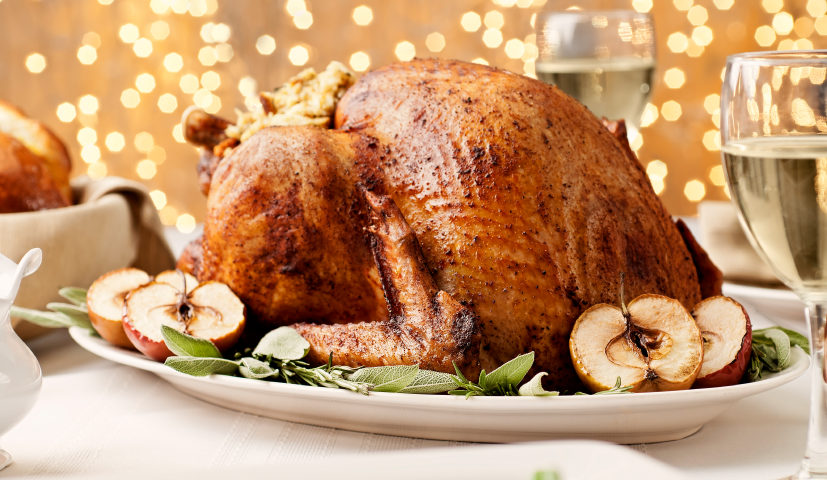[twitter style=”horizontal” float=”left”] [fbshare type=”button” width=”100″]

In the second of his festive blogs, WineTrust100’s MW Nick Adams writes about the perfect matches for Christmas meats.
Turkey
Good quality, free range turkey can be mildly gamey (like Guinea fowl) and depending on how it has been cooked it can work surprisingly well with a light bodied red or fuller bodied rosé, as with a (more obvious choice) dry white wine. And don’t forget that the trimmings often come with a salty and tangy edge to them (eg sausage, bacon, stuffing).
If you are doing traditional bread sauce (with clove studied onion as its base) you are adding dairy and soft spice notes. In general for white avoid anything that is heavily oaked as this will conflict with these flavours. Equally you want a white which has some weight, punch and fruit.
Regarding a red, opt for a lighter bodied red, which is fruity but not too tannic – and serve it cool (10 minutes in the fridge) as this lifts the whole profile if the wine with the food. Basically any crisp, dry, unoaked white which you normally enjoy will work, but if you want to be a little different…
For white wines ideal partners are the Lawson’s Dry Hills Marlborough Sauvignon Blanc, Mara Martin Godello from North West Spain or the classic Chablis Domaine Moreau-Naudet from Burgundy.
Examples of good red partners are Fleurie Manoir du Carra, Valpolicella Allegrini or try the Little J Zweigelt from Austria. A good rosé option is the excellent Château Moutète from the south of France.
Roast Beef
Many people opt for this British classic and it is also great cold in evening sandwiches, or on Boxing Day with salad and roast potatoes! With its savoury richness, fibrous texture and infused fat it will come as no surprise that a dry, fuller bodied, more tannic red is a strong recommendation. And please don’t worry if you are not usually a fan of this style, because the dry tannins merge perfectly with the fatty richness and protein texture, to elevate the pure savoury character of the beef – whilst the soft fruity character of the wine is also elevated by the absorption of the tannins: result – a perfect marriage!
No surprises here indulge in a classic red Bordeaux – Châteaux des Gravières Graves, or Vivens Margaux for a treat; or these Italians will do the job: the Chianti Classico Fontodi or Barolo Le Albe from Vajra. From the New World the Renacer Reserva Malbec is spot on along with the Eben Sadie Sequillo South African red Rhône blend
Game – including goose, duck, pheasant and venison
Approach game not unlike with beef, but game is often more fibrous, and although often fatty to start with this rapidly drains away and does not necessarily infuse into the meat as with beef and lamb for example – result, quite and dry and even more textural. Therefore go with a full bodied and rich red. All those mentioned in the beef section above will work, but here as well New World reds can come into their own, such as the Seghesio Californian Zinfandel, the sumptuously bold John Duval Barossa Shiraz, the Argentinean Polenta Estate Cabernet Franc. All game needs to be served with a sauce/jus/gravy/bread sauce, so the contents of these need to be borne in mind as much as anything – e.g. the classic venison and chocolate sauce really calls for New World red! Also game works very well in slow roasted casseroles – and also components such as juniper come into play. Soft spices can then play a role – e.g. cinnamon with duck, which requires a slightly less full bodied and sweeter wine – such as a Pinot Noir, either classic Burgundy or New World (good examples include Tabali Pinot Noir from Chile or the Beaune Bastion I’er Cru from Chanson). Likewise this would be the recommendation for more delicate game birds such as guinea fowl, quail and partridge.
Ham on the bone
This is an old and often forgotten classic – if you have a local butcher who cures and sells on the bone a real seasonal treat – or buy from a good delicatessen source. There will always be an element of salt but it should not be “salty” if that makes sense. Good cured ham should be moist and (maybe surprisingly) taste of pork. It is one of those dishes which can be served with a white or red wine, but the red must be light bodied and have good acidity (and again serve cool as mentioned before). Whites which work best are unoaked, with plenty of acidity (this really cuts through the salt). Any white wine with a “tangy” note to it works well – again probably no surprise to you.
Ideal partners include: Casas del Bosques Chillan Sauvignon Blanc, Cotes de Gascogne Domaine St. Lannes and the Château Cap Martin Bordeaux Blanc
[twitter style=”horizontal” float=”left”] [fbshare type=”button” width=”100″]

